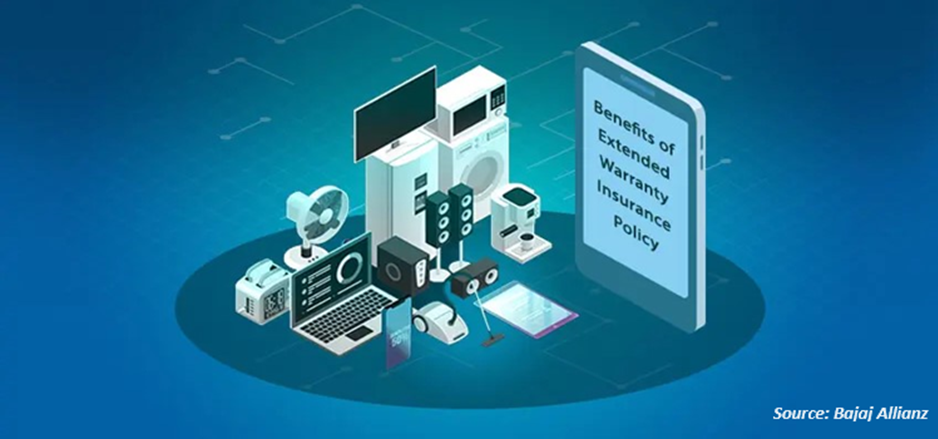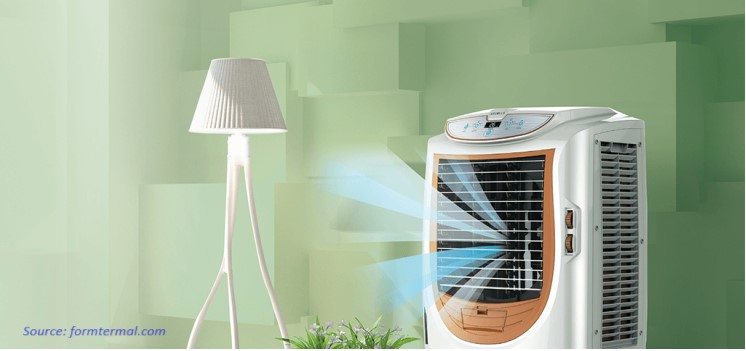
Water Purifier Market by Technology (UV, RO, and Gravity-based), by Portability (Portable and Non-portable), by Distribution Channel (Retail Sales, Direct Sales, and Online Sales), and by End-User (Commercial and Residential): Global Opportunity Analysis and Industry Forecast, 2023–2030
Industry: Retail and Consumer | Publish Date: 04-Jan-2023 | No of Pages: 202 | No. of Tables: 158 | No. of Figures: 118 | Format: PDF | Report Code : N/A
Market Definition:
The global Water Purifier Market size was valued at USD 40.75 billion in 2022 and is predicted to reach USD 82.66 billion by 2030, registering a CAGR of 7.8% from 2023 to 2030.
A water purifier decontaminates water by removing undesired substances, chemicals, pathogens, microorganisms, and other dissolved solids to make it potable. Water purifiers retain essential vitamins and minerals in water and remove the extra salts, suspended particles, and microbes. Based on the technology used, various types of water purifiers are available in the market: reverse osmosis (RO), ultraviolet (UV), and gravity-based purifiers. Water purifiers provide clean, potable water for industrial, pharmaceutical, chemical, and medicinal uses.
Furthermore, pollutants such as suspended particles, parasites, bacteria, algae, viruses, and fungi are reduced in number through the purifying process. Water purifiers are primarily used in residential and commercial spaces. In addition, they are used in disaster-prone areas as well as by military personnel, campers, hikers, and workers living in areas where effluents contaminate drinking water.
The Emergence of Smart Purification Propels the Market Growth
Smart purifiers with advanced technologies are becoming a new trend in the global market. They are easy to operate and come with multiple stages of purification. In addition, water usage is monitored, and settings are adjusted accordingly. In addition, smart purifiers are designed to generate alerts or notifications to notify users of maintenance requirements.
People are opting for feature-packed purifiers as their standard of living and spending capacity improve, especially in developing economies in Asia Pacific and the Middle East. For instance, in May 2022, Lustral Water launched AI and IoT-enabled water purifiers. In addition to eliminating toxins and harmful bacteria, these advanced water purifiers retain essential minerals, monitor consumers’ water consumption, PH, and TDS levels, and keep tabs on their drinking water intake. Thus, the rapid growth of such smart technology-based purifiers is expected to drive the water purifier industry.
Multiple Benefits Associated with the Use of Water Purifiers
Water purifiers can remove hazardous viruses, bacteria, and other impurities and offer safe drinking water. They can eliminate giardia & cryptosporidium to reduce the possibility of gastrointestinal illness by 33%. In addition, it filters chlorine & its by-products and lowers the threat of bladder & rectal cancer. Furthermore, consuming clean water improves the digestive system, maintains optimal energy levels, aids in skin health, helps reduce weight, and strengthens the body’s overall immune system.
Also, using clean and safe water for cooking preserves the natural flavor of the food. Home water filter systems remove minerals that can affect the overall quality of water. Using water purification systems at the entry point increases the life of water pipes and lowers maintenance costs.
For instance, in May 2022, Sharp launched a water purifier with a unique disruptor technology to ensure superior quality and consistency of filtered water. This new smart and intelligent water purifier from Sharp uses a powerful and durable 6-stage filtration process and is designed to purify water with various impurities and sources. These factors would drive the growth of the water purifier industry during the forecast period.
The High Cost Associated with Water Purifiers Hinders the Market Growth
The cost of installing filters and pipes, as well as the ongoing maintenance cost and replacement of filter elements, has become a major disadvantage of any water purification system. Water utilities face a greater cost and may need to construct large water treatment stations, pumps, pipes, and staff to maintain and service the equipment. In both their production and operation, water purifiers are energy-intensive. Reverse osmosis and ultraviolet filtering rely on electricity, indirectly increasing carbon emissions.
The Introduction of Nanotechnology in Water Purifiers Creates Opportunities
Nanotech-based water purification processes are considered modular, highly efficient, and cost-effective compared to conventional water purification methods. The impurities that nanotechnology can tackle depend on the water purification stage to which the technique is applied. It can remove sediments, chemical effluents, charged particles, bacteria, and other pathogens. It can also trace elements such as arsenic, and viscous liquid impurities such as oil can also be removed using nanotechnology.
The main advantage of using a nano filter over a conventional filter system is that less pressure is required to pass water across the filter, making them more efficient and easy to clean by the back-flushing method, especially for large surfaces. These factors are expected to provide ample growth opportunities for the market players in the next few years.
The Asia-Pacific Market Holds the Lion’s Share of the Aater Purifier Market
Asia-Pacific currently holds the largest share of the water purifier market and is expected to continue its dominance during the forecast period. This region has limited reserves of water suitable for drinking & hygiene owing to the lack of basic drinking water availability and growing population, which in turn drives the market’s growth.
According to the estimates of the World Vision Organization in 2020, more than 369 million people in the Asia Pacific region do not have access to basic sanitation services, and 165 million people lack access to drinking water.
Moreover, the water purifier industry is gaining significance, as the problem of severe water pollution has surfaced due to rapid industrialization and increased use of pesticides that deteriorate the water quality. According to the report published by the USC US-China Institute in July 2022, in China, only 14% of water is suitable for usage and is used for basic needs, including hydration, sanitation, hygiene, and cooking.
Also, according to the studies conducted by the Indian Institute of Technology, Kharagpur, in 2020, the levels of pesticides, such as atrazine and malathion, found in the water were 46 times higher than the permissible limits prescribed by the World Health Organisation (WHO), which is 0.9 mg per liter of water.
Europe is Growing Steadily in the Water Purifier Market
Europe is expected to show a steady rise in the water purifier market share due to the rising cases of skin diseases and growing awareness about maintaining skin health and boosting the body’s immune system. According to World Health Organization published in 2020, about 1,543 people died from skin disease in Germany.
Also, the growing incidences of waterborne diseases that caused several health issues, such as diarrhea and cholera, in Spain increased the demand for water purifiers in the region. For instance, in September 2021, the city council of Muxia, Spain, reported an increase in the number of patients with acute gastroenteritis (AGE). AGE was caused due to the direct consumption of tap water, and about 115 probable cases were ascertained during the investigation by the local health authority.
Competitive Landscape
The water purifier industry comprises various key players such as Evoqua Water Technologies, Whirlpool Corporation, 3M Company, Pall Corporation, Suez Water Technologies and Solutions, Pentair Plc, Brita LP, Veolia, LG, Unilever PLC, Kent RO Systems, A.O Smith Corporation, Eureka Forbes, Coway Co. Ltd., and General Electric Company. These market players have adopted various strategies, such as acquisitions and product launches across various regions, to maintain their dominance in the market.
For instance, in June 2022, A.O Smith announced a strategic acquisition of Atlantic Filter Corporation, a Florida-based water purification company, in a monetary transaction. This acquisition enabled them to expand their capabilities and grow their water treatment business in North America. The acquisition among the key players would help businesses to grow and expand their footprint during the forecast period.
Also, in January 2022, SUEZ Water Technologies & Solutions announced the acquisition of Sentinel Monitoring Systems. This acquisition enables Suez to utilize Sentinel’s technology to detect individual microorganisms 150x faster than conventional methods, reducing the risk of microbial contamination and allowing manufacturers to respond quickly to control risks. The acquisitions among key players to strengthen their portfolio with advanced water testing capabilities are further expected to boost the industrial water purifier market.
Moreover, in October 2021, Unilever announced the launch of Pureit, an innovation in reverse osmosis (RO) water purification, in the US market. Pureit introduced its breakthrough Pureit 5 Series Reverse Osmosis Water Purifier, which brings high-performing filtration technology to consumers in a compact, tankless design. Launching the new advanced water purifiers creates tough competition for other players and drives innovation of advanced products.
Water Purifier Market Key Segments
By Technology
-
UV
-
RO
-
Gravity-Based
By Portability
-
Portable
-
Non-Portable
By Distribution Channel
-
Retail Sales
-
Direct Sales
-
Online Sales
By End User
-
Commercial
-
Residential
By Geography
-
North America
-
U.S.
-
Canada
-
Mexico
-
-
Europe
-
Russia
-
Rest of Europe
-
Western Europe
-
-
Asia-Pacific
-
China
-
India
-
Japan
-
South Korea
-
Rest of Asia-Pacific
-
-
RoW
-
Middle East
-
Brazil
-
Remaining Countries
-
Report Scope and Segmentation
|
Parameters |
Details |
|
Analysis Period |
2022–2030 |
|
Base Year Considered |
2022 |
|
Forecast Period |
2023–2030 |
|
Market Size Estimation |
Billion (USD) |
|
Market Segmentation |
By Technology (UV, RO, Gravity Based) By Distribution Channel (Retail Sales, Direct Sales, Online) By Portability (Portable, Non-portable) By End- User (Commercial, Residential) |
|
Geographical Segmentation |
North America (U.S., Canada, Mexico) Europe (Russia, Rest of Europe, Western Europe), Asia-Pacific (China, India, Japan, South Korea, Rest of Asia-Pacific), Rest of the World (Middle East, Brazil, Remaining Countries) |
|
Companies Profiled |
Evoqua Water Technologies, Whirlpool Corporation, 3M Company, Pall Corporation, Suez Water Technologies and Solutions, Pentair Plc, Brita LP, Veolia, LG, Unilever PLC, Kent RO Systems, A.O. Smith Corporation, Eureka Forbes, Coway Co Ltd.,General Electric Company |
KEY PLAYERS
-
Evoqua Water Technologies
-
Whirlpool Corporation
-
3M Company
-
Pall Corporation
-
Suez Water Technologies and Solutions
-
Pentair Plc
-
Brita LP
-
Veolia
-
LG
-
Unilever PLC
-
Kent RO Systems
-
A.O. Smith Corporation
-
Eureka Forbes
-
Coway Co Ltd.
-
General Electric Company




 Speak to Our Analyst
Speak to Our Analyst


































